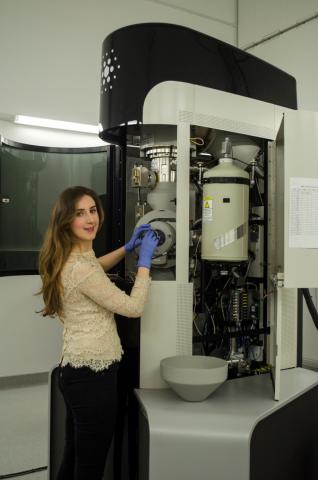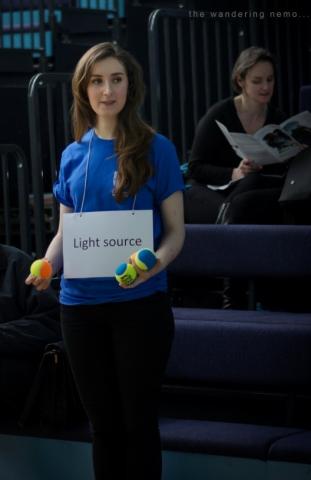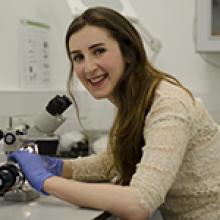Helen explains her path to becoming a PhD student in the GaN group.
Download Helen's researcher profile as a PDF
Contact details and more information on Helen's research

How did you join the Cambridge Centre for Gallium Nitride?
During the third year of my undergraduate degree we were required to produce a literature review into an area of ongoing research. While reading through the list of possible topics, I found the description of the GaN research interesting, and so I went with that. Three years later I’m still here!
During my fourth year research project, however, I deviated from Gallium Nitride to study the optical properties of a blue pigment, in association with the Hamilton Kerr Institute (the department within the University which undertakes the conservation of easel paintings). I asked Rachel Oliver if she would mind supervising the project, and she kindly agreed. This gave me a good introduction to various techniques, which I would later come to use once I started my PhD on blue single photon sources.
What is your role in the group?
I work on characterisation of quantum dots, focusing mainly on Electron Microscopy. Quantum dots are of interest as potential emitters of blue photons one at a time, which is necessary for future secure communication technologies based on quantum cryptography. The quantum dots I am investigating consist of inclusions of InGaN within a GaN matrix at a size on the order of a few nanometres. I use Transmission Electron Microscopes to study the structural morphology of these features, so that we can correlate different growth mechanisms with the structure, and how this affects the optical properties.

What do you like best about working in the group?
I enjoy research as I get to do something no one has done before. Even if it’s the tiniest and most insignificant aspect of a topic (even if it’s irrelevant!), you will get to see something about a sample that no one has ever seen before. The Cambridge Centre for Gallium Nitride, in particular, is a rewarding and supportive place to study thanks to the friendly and collaborative atmosphere in the group.
Where do you see nitrides in future?
Nitrides have so many different exciting applications. As my work is mainly focussed on quantum dots, I am curious about the research development in this interesting and important field. If we manage to achieve safer communication in an age when cyber-security becomes ever-more critical, it would feel very satisfying to know I have contributed with my work to the success of such a key technology, even if it is only in a very small way.



